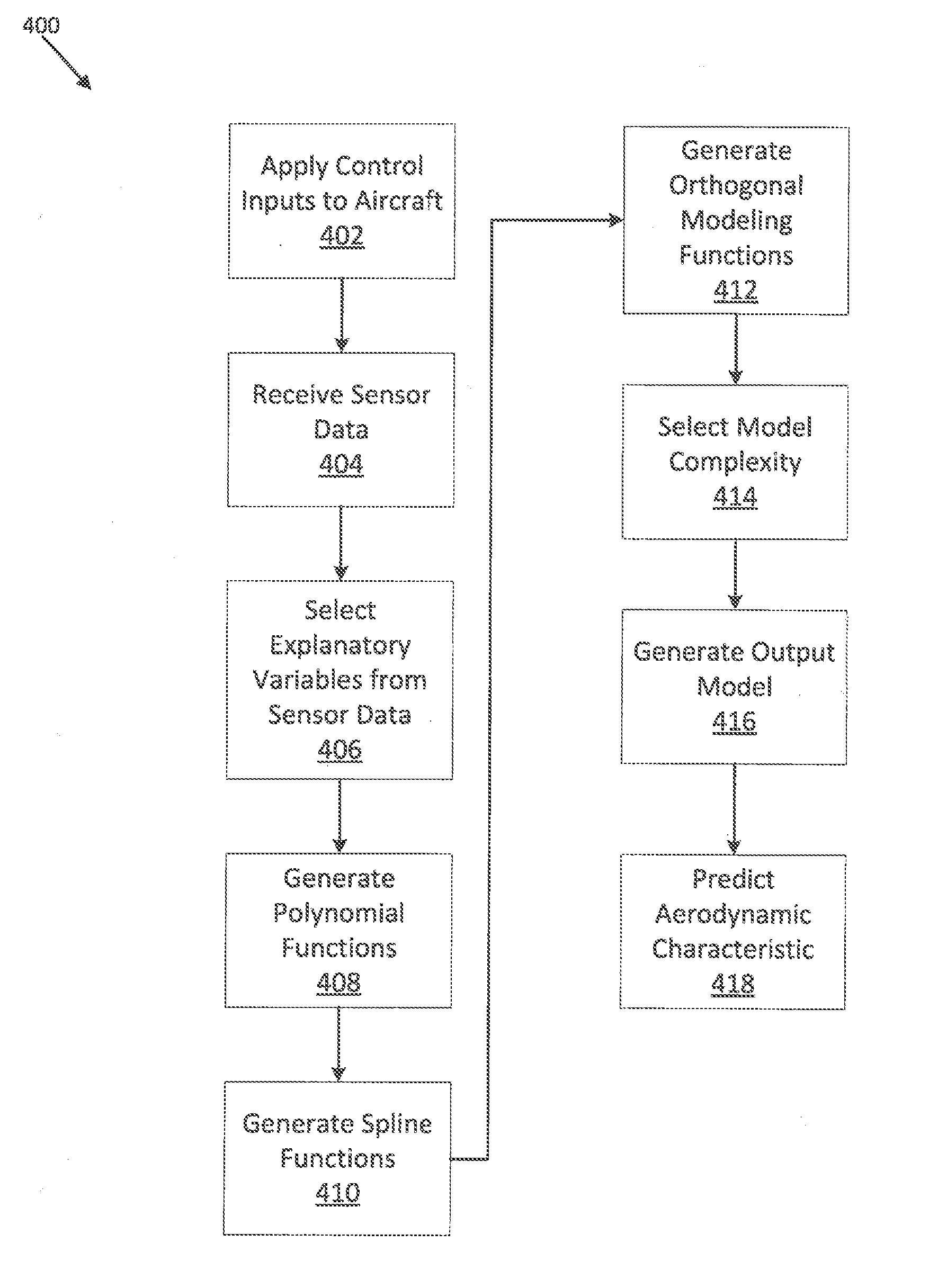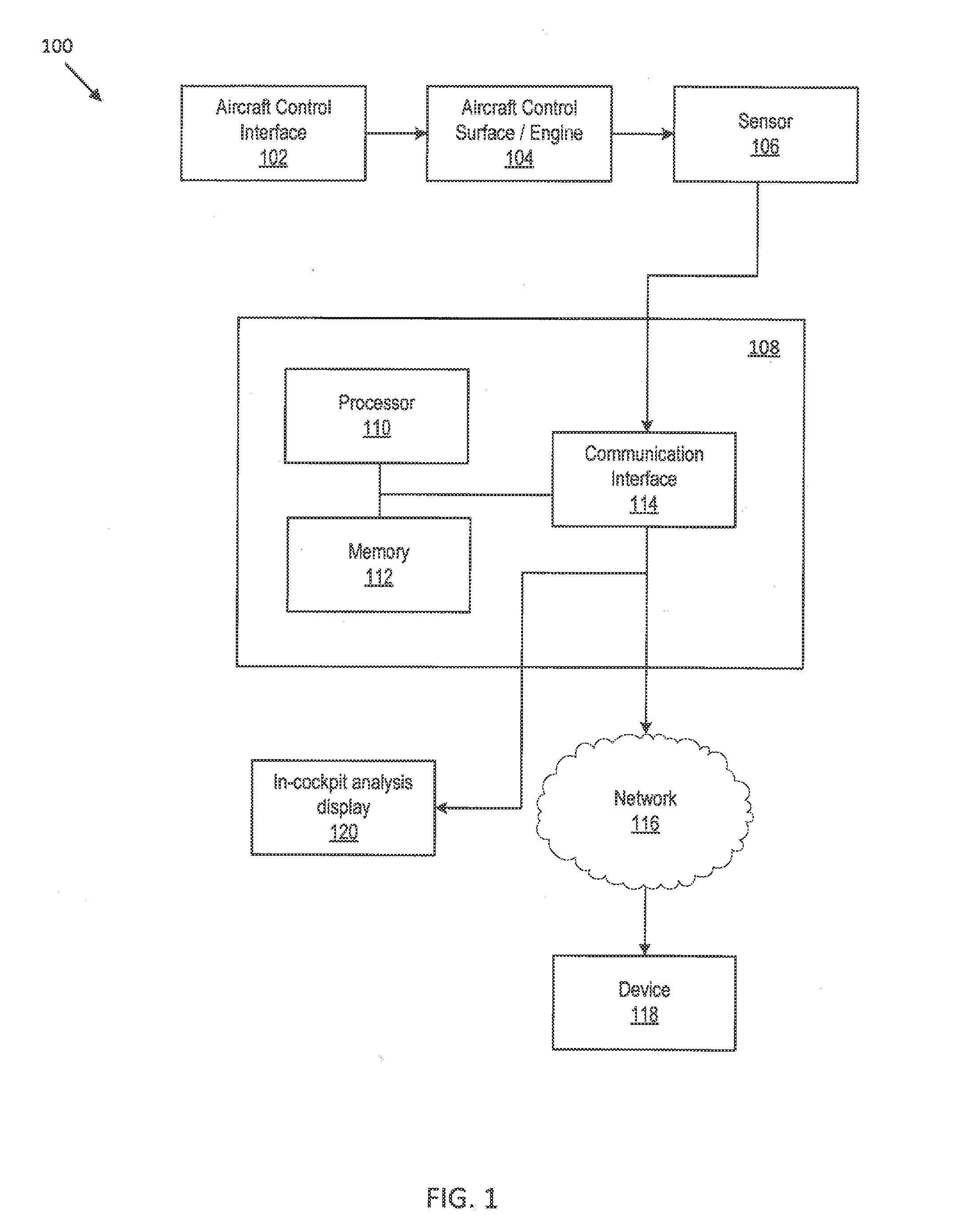Aerodynamic Modeling Using Flight Data
- Summary
- Abstract
- Description
- Claims
- Application Information
AI Technical Summary
Benefits of technology
Problems solved by technology
Method used
Image
Examples
Example
[0079]Development of a global aerodynamic model of a vehicle, such as for example an aircraft, using flight data gathered from a full-scale aircraft may avoid one or more issues of fidelity that may be encountered when using data derived from scaled testing in wind tunnels, or from computational methods. However, conventional full-scale flight testing may be associated with one or more additional limitations. For example, conventional full-scale flight testing may produce inadequate data due to time limitations associated with the high cost of full-scale flight testing. Advantageously, the systems and methods described herein may be utilized to more quickly develop a global aerodynamic model of an aircraft. As such, the systems and methods described herein may be utilized to develop a global aerodynamic model of an aircraft in real-time, during a test flight. Further, the increased speed at which the systems and methods described herein allow for an aerodynamic model to be developed...
PUM
 Login to view more
Login to view more Abstract
Description
Claims
Application Information
 Login to view more
Login to view more - R&D Engineer
- R&D Manager
- IP Professional
- Industry Leading Data Capabilities
- Powerful AI technology
- Patent DNA Extraction
Browse by: Latest US Patents, China's latest patents, Technical Efficacy Thesaurus, Application Domain, Technology Topic.
© 2024 PatSnap. All rights reserved.Legal|Privacy policy|Modern Slavery Act Transparency Statement|Sitemap



